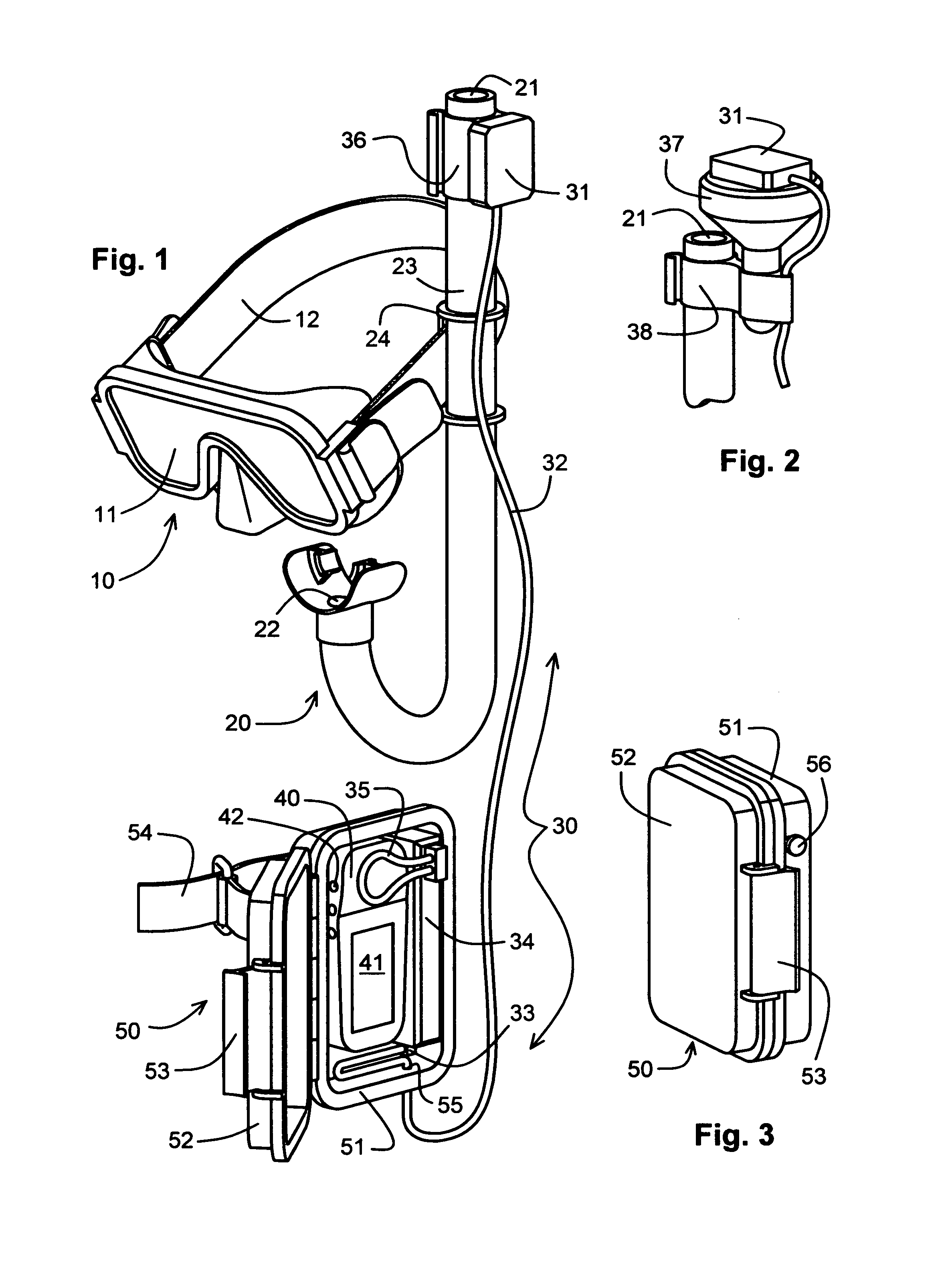Navigation system for a snorkeler
a navigation system and snorkeling technology, applied in underwater equipment, instruments, measurement devices, etc., can solve the problems of poor navigation skills, poor navigation skills, and a much higher chance of missing most of them
- Summary
- Abstract
- Description
- Claims
- Application Information
AI Technical Summary
Benefits of technology
Problems solved by technology
Method used
Image
Examples
Embodiment Construction
[0032]The illustrative embodiment is shown in FIG. 1 and comprises mask 10, snorkel 20, GPS re-radiator assembly 30, handheld GPS receiver 40, and waterproof case 50. Masks and snorkels are known in the art and shown in only generic form. GPS re-radiator assemblies are also known in the art and typically comprise a receiving antenna, a power source, a signal amplifier and a re-transmitting antenna. Handheld GPS receivers are also known in the art and are marketed by a number of manufactures. Typically, they include an internal GPS signal receiving antenna, a GPS signal and data processor, and a display for presenting navigational information to the user. The type and form of the navigational information presented varies from manufacturer to manufacturer, but most have several user selectable screens to present a graphical map, a compass, and numerical data. They have become so ubiquitous that a detailed explanation of their workings, controls, and graphical displays is not necessary...
PUM
 Login to View More
Login to View More Abstract
Description
Claims
Application Information
 Login to View More
Login to View More - R&D
- Intellectual Property
- Life Sciences
- Materials
- Tech Scout
- Unparalleled Data Quality
- Higher Quality Content
- 60% Fewer Hallucinations
Browse by: Latest US Patents, China's latest patents, Technical Efficacy Thesaurus, Application Domain, Technology Topic, Popular Technical Reports.
© 2025 PatSnap. All rights reserved.Legal|Privacy policy|Modern Slavery Act Transparency Statement|Sitemap|About US| Contact US: help@patsnap.com


